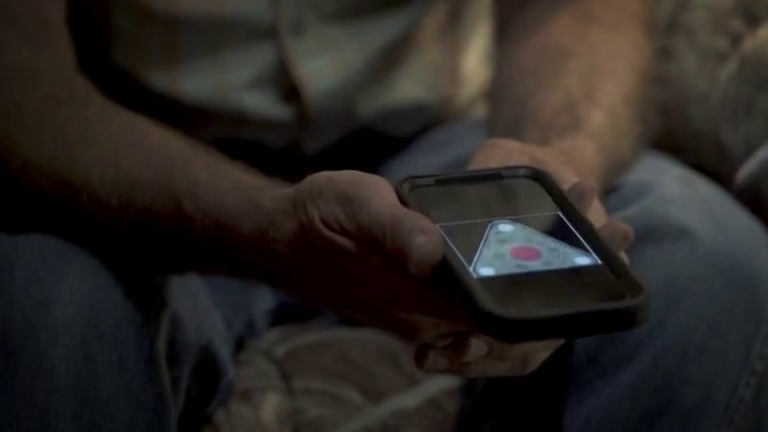
Patient: MERRITT JR, GUY A
MRN: 300000835397 Admit: 2/6/2025 10:30 EST
FIN: 70000012669701 Disch: 2/7/2025 14:30 EST
DOB/Age/Sex: 2/10/1952 73 years M Admitting: Nepal,MD,Saurav
Location: LAP 2N PCU; 2244; A Attending: Nepal,MD,Saurav
_______________________________________________________________________________________________
Report Request ID: 187840847 Print Date/Time: 3/14/2025 00:13 EDT
Computed Tomography
Exam Accession Exam Date/Time Patient Age at Exam
CT Angio Brain and Neck 070-CT-25-0026867 2/6/2025 13:03 EST 72 years
Reason for Exam
(CT Angio Brain and Neck) Blurred vision. Eval for any posterior stroke;Stroke
Report
EXAMINATION TYPE: CT Angio Brain and Neck
DATE OF EXAM: 2/6/2025 1:03 PM
HISTORY: Intermittent blurred vision. Initial encounter. Stroke suspected. Recent cardiac catheterization Monday.
COMPARISON: None
TECHNIQUE: Multidetector CTA per protocol following the IV administration of nonionic contrast. Coronal and sagittal
reformatted images are reviewed. 3D reconstructed images are created on an independent workstation and reviewed.
Automatic exposure control utilized patient dose reduction.
NASCET criteria utilized for arterial vessel analysis.
FINDINGS:
Osseous structures:Intact. Advanced disc and endplate degeneration C5-6 with spondylosis.
Upper chest: Lung apices appear clear. The aortic arch is nonaneurysmal with no dissection but exhibits irregular plaque
in the anterior apex of the arch.
Soft tissues: The central airway and paracervical soft tissues appear intact with no inflammatory findings, mass or
lymphadenopathy.
CTA brain:
There is satisfactory enhancement of the arterial and venous structures of the brain. The circle of Willis appears intact
with no large vessel thrombosis, aneurysm or enhancing lesions.
Right carotid vertebral system:
The right carotid vertebral arterial structures are intact without thrombosis, dissection or enhancing lesions.
Left carotid vertebral arterial system:
The left carotid vertebral arterial structures are intact without thrombosis, dissection or enhancing lesions.
IMPRESSION:
1. Negative CTA of the brain and bilateral carotid vertebral arterial systems. All vessels intact. No enhancing lesions. No
acute process of the paracervical regions.
2. Moderately advanced disc and endplate degeneration C5-6
MRN: 300000835397 Admit: 2/6/2025 10:30 EST
FIN: 70000012669701 Disch: 2/7/2025 14:30 EST
DOB/Age/Sex: 2/10/1952 73 years M Admitting: Nepal,MD,Saurav
Location: LAP 2N PCU; 2244; A Attending: Nepal,MD,Saurav
_______________________________________________________________________________________________
Report Request ID: 187840847 Print Date/Time: 3/14/2025 00:13 EDT
Computed Tomography
Exam Accession Exam Date/Time Patient Age at Exam
CT Angio Brain and Neck 070-CT-25-0026867 2/6/2025 13:03 EST 72 years
Reason for Exam
(CT Angio Brain and Neck) Blurred vision. Eval for any posterior stroke;Stroke
Report
EXAMINATION TYPE: CT Angio Brain and Neck
DATE OF EXAM: 2/6/2025 1:03 PM
HISTORY: Intermittent blurred vision. Initial encounter. Stroke suspected. Recent cardiac catheterization Monday.
COMPARISON: None
TECHNIQUE: Multidetector CTA per protocol following the IV administration of nonionic contrast. Coronal and sagittal
reformatted images are reviewed. 3D reconstructed images are created on an independent workstation and reviewed.
Automatic exposure control utilized patient dose reduction.
NASCET criteria utilized for arterial vessel analysis.
FINDINGS:
Osseous structures:Intact. Advanced disc and endplate degeneration C5-6 with spondylosis.
Upper chest: Lung apices appear clear. The aortic arch is nonaneurysmal with no dissection but exhibits irregular plaque
in the anterior apex of the arch.
Soft tissues: The central airway and paracervical soft tissues appear intact with no inflammatory findings, mass or
lymphadenopathy.
CTA brain:
There is satisfactory enhancement of the arterial and venous structures of the brain. The circle of Willis appears intact
with no large vessel thrombosis, aneurysm or enhancing lesions.
Right carotid vertebral system:
The right carotid vertebral arterial structures are intact without thrombosis, dissection or enhancing lesions.
Left carotid vertebral arterial system:
The left carotid vertebral arterial structures are intact without thrombosis, dissection or enhancing lesions.
IMPRESSION:
1. Negative CTA of the brain and bilateral carotid vertebral arterial systems. All vessels intact. No enhancing lesions. No
acute process of the paracervical regions.
2. Moderately advanced disc and endplate degeneration C5-6
IMPRESSION: Acute ischemia in the posterior right parietal/right occipital lobe with no bleed or midline shift.
Exam Accession Exam Date/Time Patient Age at Exam
MRI Brain w/o Contrast 070-MR-25-0007669 2/7/2025 11:46 EST 72 years
Reason for Exam
(MRI Brain w/o Contrast) Neuro deficit, acute, stroke suspected;CVA (Stroke)
Report
EXAMINATION TYPE: MRI Brain w/o Contrast
DATE OF EXAM: 2/7/2025 11:46 AM
COMPARISON: MRI of the brain 3/21/2024
HISTORY: Neuro deficit expected slight blurred vision and dizziness
TECHNIQUE:
Multiplanar, multisequence images of the brain and brainstem is performed without IV contrast
FINDINGS: There is restricted diffusion compatible with acute ischemia in the posterior right parietal/occipital lobe. There
is no midline shift. No recent or remote hemorrhage. There is mild chronic periventricular deep white matter ischemic
change. The flow voids of the skull base are unremarkable. The globes are symmetric as are the extraocular muscles and
nerves. There is mild age-related atrophy. There is no recent hemorrhage. There is a region of encephalomalacia in the
left cerebellum.
IMPRESSION: Acute ischemia in the posterior right parietal/right occipital lobe with no bleed or midline shift
MRI Brain w/o Contrast 070-MR-25-0007669 2/7/2025 11:46 EST 72 years
Reason for Exam
(MRI Brain w/o Contrast) Neuro deficit, acute, stroke suspected;CVA (Stroke)
Report
EXAMINATION TYPE: MRI Brain w/o Contrast
DATE OF EXAM: 2/7/2025 11:46 AM
COMPARISON: MRI of the brain 3/21/2024
HISTORY: Neuro deficit expected slight blurred vision and dizziness
TECHNIQUE:
Multiplanar, multisequence images of the brain and brainstem is performed without IV contrast
FINDINGS: There is restricted diffusion compatible with acute ischemia in the posterior right parietal/occipital lobe. There
is no midline shift. No recent or remote hemorrhage. There is mild chronic periventricular deep white matter ischemic
change. The flow voids of the skull base are unremarkable. The globes are symmetric as are the extraocular muscles and
nerves. There is mild age-related atrophy. There is no recent hemorrhage. There is a region of encephalomalacia in the
left cerebellum.
IMPRESSION: Acute ischemia in the posterior right parietal/right occipital lobe with no bleed or midline shift
Acute ischemia, or a sudden blockage of blood flow, in the posterior right parietal and right occipital lobes can lead to a range of neurological deficits, including visual impairments, spatial disorientation, and difficulty with sensory perception.
Here’s a breakdown of the potential effects:
-
Occipital Lobe (Visual Processing):
- Visual Field Defects: Loss of vision in one or both sides of the visual field (hemianopia) or even complete blindness (cortical blindness).
- Visual Agnosia: Difficulty recognizing objects or faces despite having intact vision.
- Prosopagnosia: Inability to recognize faces.
- Visual Hallucinations: Seeing things that aren’t there.
- Difficulty with Reading and Writing: Problems with processing written words.
- Movement Agnosia: Difficulty recognizing the movement of an object.
- Visual Field Defects: Loss of vision in one or both sides of the visual field (hemianopia) or even complete blindness (cortical blindness).
-
Parietal Lobe (Sensory and Spatial Processing):
- Sensory Deficits: Loss of sensation on the opposite side of the body, including touch, temperature, and pain.
- Spatial Disorientation: Difficulty with spatial awareness, navigation, and object recognition.
- Gerstmann’s Syndrome: A cluster of symptoms including difficulty with writing, arithmetic, finger agnosia (difficulty identifying fingers), and left-right confusion.
- Apraxia: Difficulty with skilled movements and planning.
- Neglect: Difficulty attending to one side of the body or environment.
- Aphasia: Difficulty with language, including speaking, understanding, reading, and writing.
- Restlessness and Manic Episodes: In some cases, parietal lobe damage can lead to agitation, irritability, and other mood changes.
- Sensory Deficits: Loss of sensation on the opposite side of the body, including touch, temperature, and pain.
-
Posterior Circulation Ischemic Stroke:
- Vertigo and Imbalance: Problems with balance and coordination.
- Slurred Speech: Difficulty speaking clearly.
- Double Vision: Seeing double.
- Nausea and Vomiting:
- Headache:
- Vertigo and Imbalance: Problems with balance and coordination.
-
General Stroke Symptoms:
- Weakness or Numbness: On one side of the body.
- Difficulty Speaking or Understanding:
- Difficulty Walking or Loss of Balance:
- Weakness or Numbness: On one side of the body.



